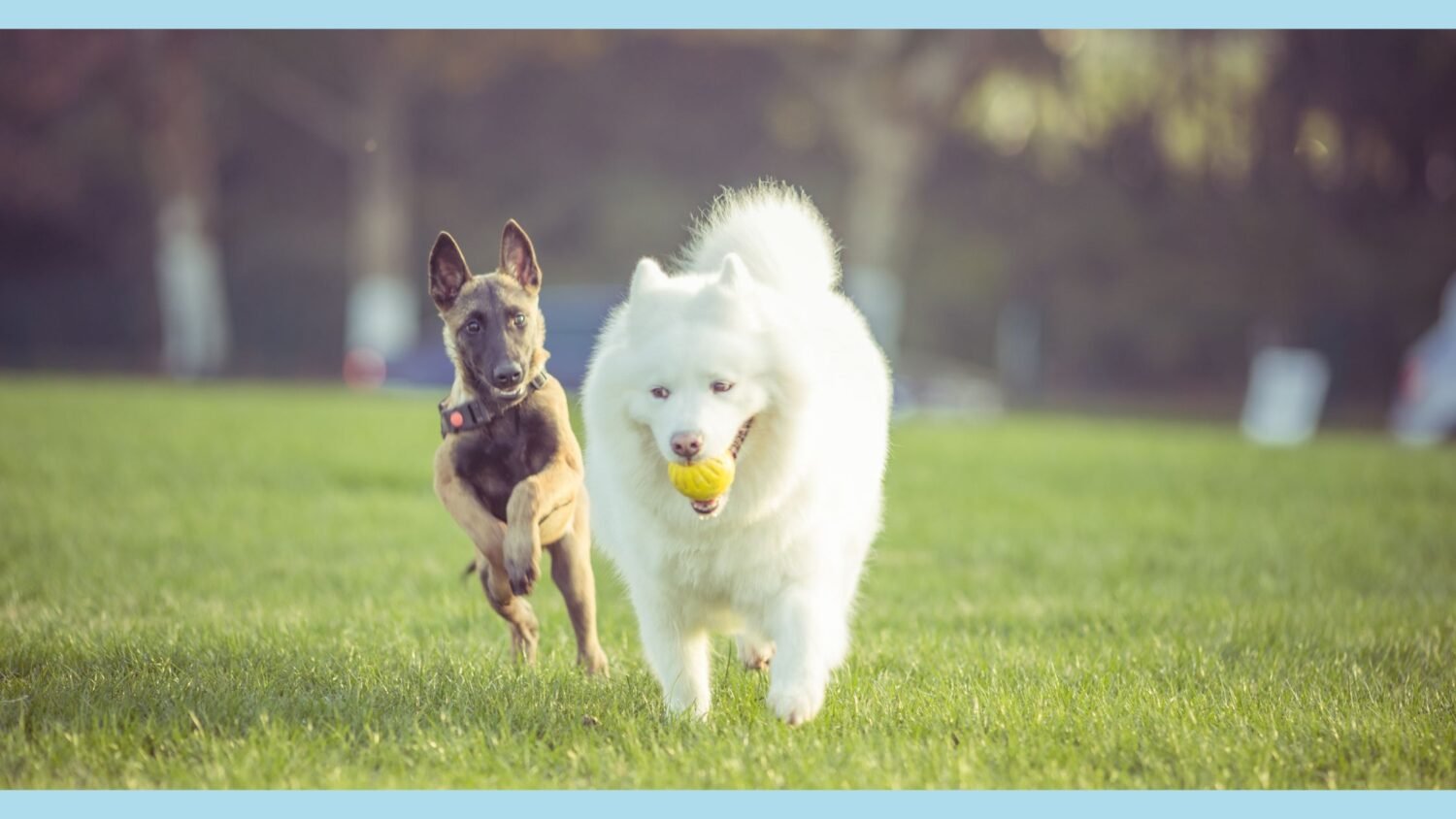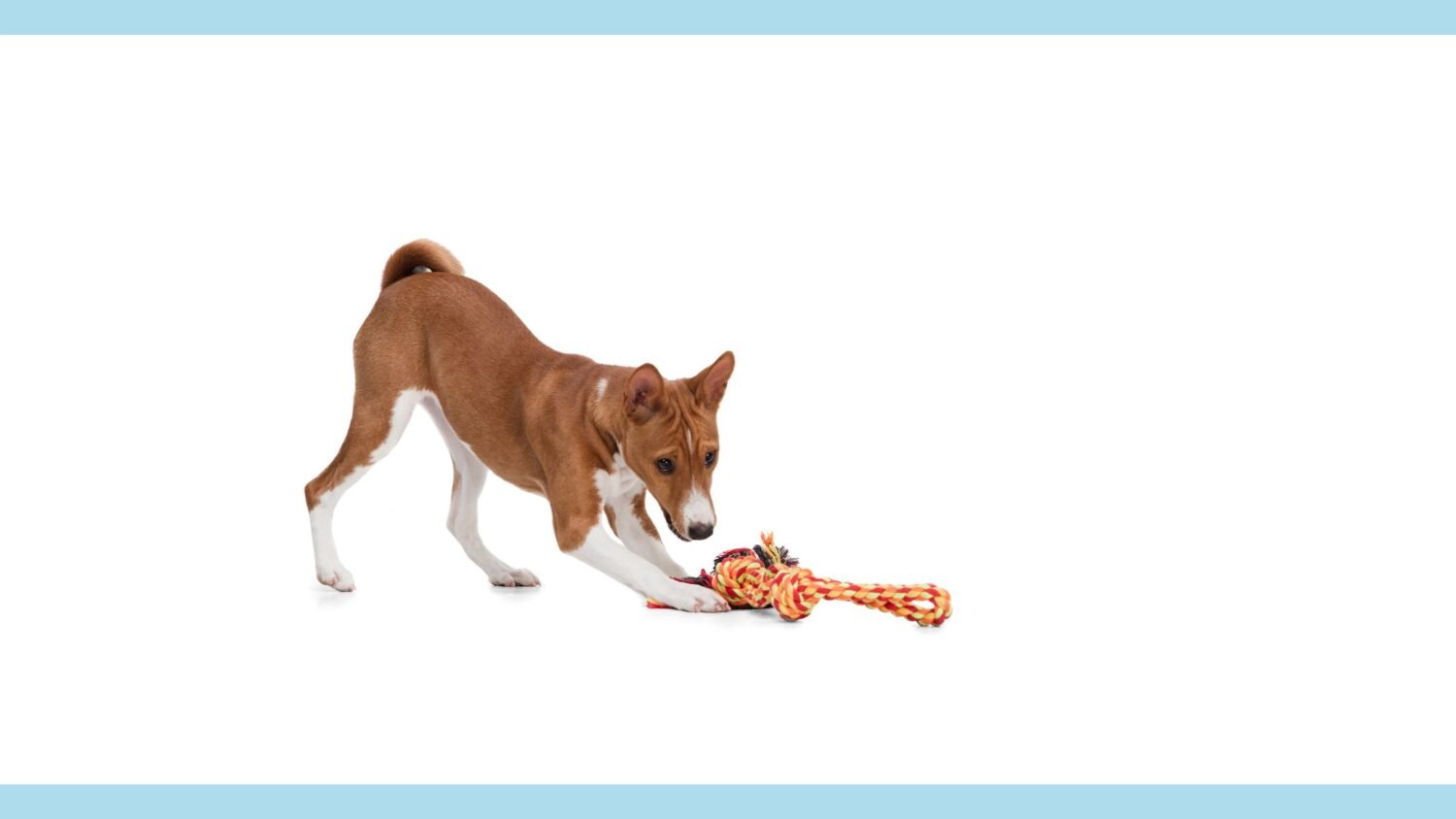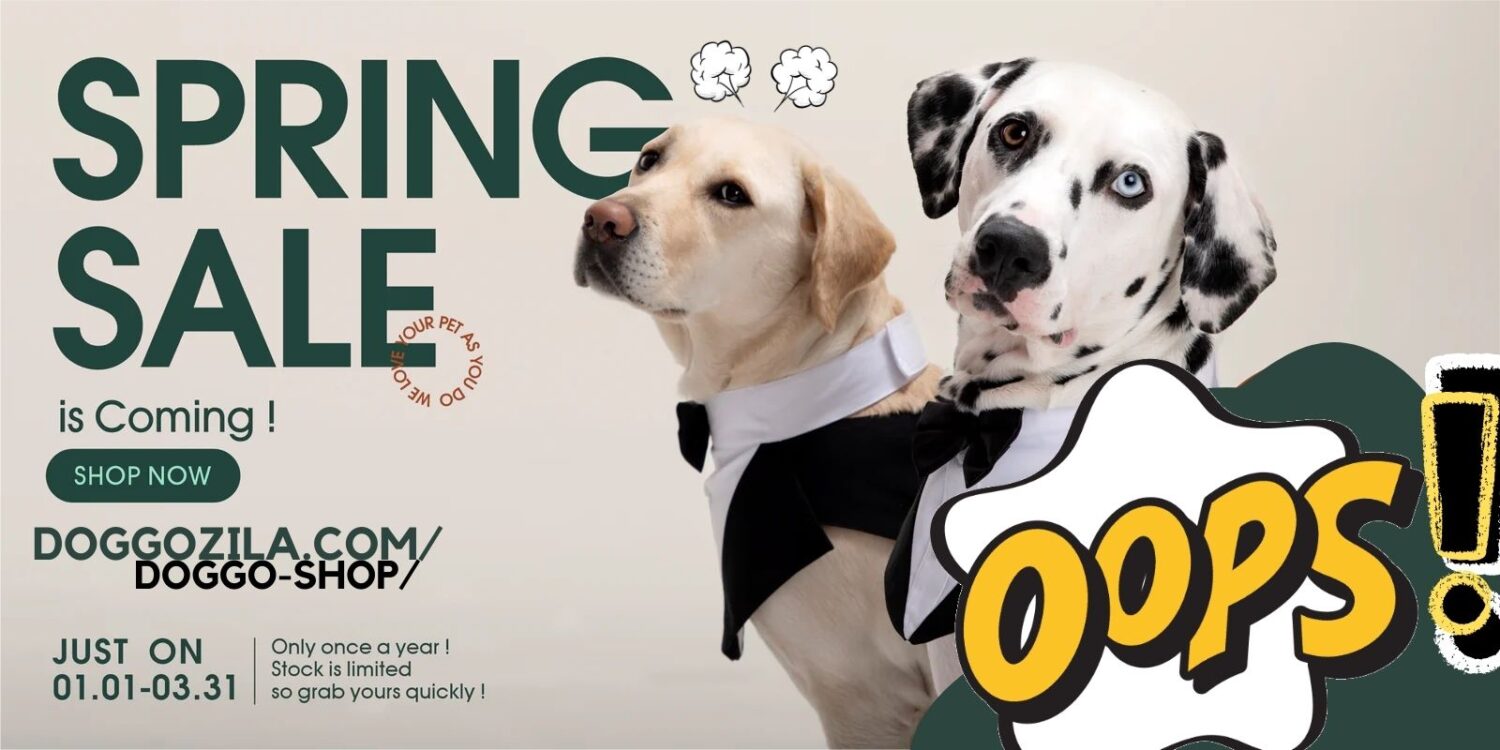
A FUN ACTIVITY FOR YOU AND YOUR PUP
Teaching your dog to fetch is a fun experience for both of you. It gives your dog mental and physical exercise. It also helps you bond with your pet. You can teach this trick to puppies or adult dogs. This guide will show you how to teach your dog to fetch step-by-step.
Pick a Toy and Introduce It to Your Dog The Game Fetch Before you start to Teach
First, find a toy your dog likes to play with. It could be a ball, frisbee, or toy they can carry in their mouth. Make sure it’s safe and sturdy for fetching. Show your dog the toy. Let them sniff and explore it. Praise them for being interested. This helps make them like the toy.
Once your dog likes the toy, have them pick it up. Hold the toy and let them sniff it. Use a command like “take it” or “fetch.” Give a treat when they pick it up. Do this many times until your dog picks up the toy on command.
Get Your Dog to Hold the Toy
Next, teach your dog to hold the toy. Say the command again as they pick it up. Praise them while they hold it. Give a treat if they hold it for a few seconds. Keep practicing until your dog holds the toy without dropping it.
Teaching Your Dog to “Drop It”
Once your dog can pick up a toy, teach them “drop it.” This helps with fetch training. Hold a treat, say “drop it,” and gently open your dog’s mouth. When they drop the toy, give the treat and praise. Repeat until your dog links “drop it” with dropping the toy.
Start Close, Use Rewards
To fetch, throw a toy a short way. Say “fetch” or “go get it” for your dog to retrieve it. When they bring it back, use “drop it” and reward with a treat and praise. Repeat, gradually throwing farther each time. Always use positive reinforcement like treats, praise, and affection when your dog fetches and drops the toy properly. Avoid punishment, as it confuses dogs.
Consistency is important when teaching fetch. Have regular, short practice sessions, increasing length as your dog improves. Make it fun for your dog to fetch.
Keep Practicing
Reinforce fetch training with ongoing practice sessions. Start short and increase session length as your dog gets comfortable fetching. Remember to keep sessions enjoyable for your dog while they master this skill.
Always Teach Your dog to Make Fetch Exciting with Variety and Breaks
After your dog learns basic fetch, add fun changes. Throw the toy in new ways, hide it behind things, or play in new places. This keeps your dog interested and thinking. Do not overdo training, though. Take breaks so your dog does not get too tired or bored. Rest often between sessions. Breaks keep your dog excited to fetch more.
Praise your dog’s success! When your dog fetches well, celebrate with treats, play, and kind words. Good rewards reinforce the behavior. Training should be fun for you both.
Teaching fetch takes time and patience. All dogs learn at their own speed. Be understanding during training. With care and positive rewards, your dog will love fetching!


THE BEST TOOLS AND TOYS TO TEACH YOUR DOG TO PLAY FETCH
Playing fetch exercises your dog’s body and mind. It also strengthens your bond. While any object works for fetch, special toys make it more fun and effective for you both. This article shares the best fetch tools and toys.
Tennis Balls and Fetch Balls
Dogs love to play fetch with tennis balls. Tennis balls are easy to throw and catch. Their bright color helps dogs spot them easily. But tennis balls can break and become unsafe for dogs. Always watch your dog while playing. Replace worn-out balls.
Fetch balls are made just for playing fetch with dogs. They are sturdy and tough. Fetch balls don’t break easily. They often have a rough surface or special grips. This helps dogs pick them up and carry them back. Some fetch balls have fun features like squeakers or treat pockets. This makes fetch more exciting for dogs.
Fetch Sticks and Rope Toys
Fetch sticks are another way to teach the game fetch with a dog. They are light and durable. Fetch sticks are made of plastic or rubber. Their shape makes them easy to throw and grab. Dogs can pick them up and bring them back. But some sticks could break into sharp pieces. This could hurt your dog. Choose safe fetch sticks that won’t splinter.
Dogs like to play and have fun. Rope toys are good for fetch. Rope toys are made of strong ropes. Dogs can easily grab and carry them. Rope toys come in many shapes like balls or rings. This makes fetch more interesting. Some rope toys have knots or handles. These make it easier for you to throw them. Pick a rope toy that fits your dog’s size and chewing habits. Make sure it is safe for your dog.
Interactive Launchers
Interactive launchers let your dog play fetch without you. These machines throw balls or other toys for your dog to chase and bring back. They come in different sizes and styles. Some can be controlled with a remote. Others can be set to throw at different distances and angles. Your dog can play for hours with these launchers. You won’t need to keep throwing the ball.
Training Treats
Training treats can help teach your dog to play fetch. Give your dog a treat when they bring the toy back to you. Your dog will learn that fetching the toy means getting a treat. Give small, soft treats that are easy to eat. This way your dog won’t get distracted from the game. Use fewer treats as your dog gets better at fetch.


HOW TO TEACH YOUR DOG TO FETCH AND RETURN TOYS
Training your dog to fetch and return toys is fun. It needs the right tools, toys, and a good approach.
Follow these simple tips to teach your dog fetch:
- Start in a familiar place, like your backyard or a quiet park.
- First, just throw the toy a short way and encourage your dog to get it.
- Use treats and praise when your dog brings the toy back to you.
- Slowly throw the toy further as your dog gets better at the game.
- Keep training sessions brief and enjoyable to avoid boredom or overwhelm.
- If your dog loses focus, take a break and try again later.
- Be patient and consistent – it may take time for your dog to learn fetch fully.
The key is making fetch a positive, fun experience. With proper tools, toys, and techniques, your furry pal can become a fetch pro!
Pro Trainer Tips To teach your dog fetch
Playing fetch bonds you and your dog. It also provides mental and physical activity. Teaching fetch can be rewarding for high-energy or calm dogs. Next, we share professional dog trainer tips to teach your dog fetch successfully.
First Learn Basic Commands
Before teaching fetch, your dog should know basic commands like “sit,” “stay,” and “drop it.” These make training easier and help your dog understand how to interact with toys and balls. Reward your dog with treats and praise when they follow commands. This creates a positive experience, making them eager to play fetch.
Use positive reinforcement: give treats and praise when your dog follows commands. This makes them happy to participate in fetch.
Choose the Right Toy
The fetch toy is important. Look for durable toys that your dog can hold easily and see when thrown. Tennis balls and rubber fetch toys work well. Choose toys based on your dog’s size and breed.
Some dogs prefer certain toys, so try different options to find their favorite. The more they like the toy, the more motivated they’ll be to fetch. Get a toy your dog likes. Dogs enjoy fetch more when they love the toy.
Always Start to Teach Your dog Fetch Inside
Introduce fetch indoors or in a familiar, enclosed area like your backyard. Less distractions help your dog focus on learning. Choose a space with room for your dog to run and retrieve the toy. Toss the toy a short distance and encourage your dog to retrieve it.
Use a happy, excited voice to make it fun. When they bring it back, reward with praise and treats. Repeat, gradually throwing farther. Begin inside with short throws. When your dog fetches, reward them. Repeat and increase distance.
Let’s teach your dog to fetch
Positive reinforcement is the best way to teach your dog to fetch. Whenever your pup brings the toy back to you, give them treats and praise. This shows your dog that returning the toy is a good thing. It’s important to keep training sessions positive.
If your dog doesn’t return the toy right away, don’t punish them. Instead, use a command like “drop it” or “release.” When they obey, give a reward. Training takes patience and consistency. Keep trying and your dog will learn.
Make Fetch More Challenging
As your dog gets better at fetch, you can make it harder. Throw the toy to different spots. Add obstacles for your dog to go around. You can even play fetch in new places, like a park or beach.
Always keep your dog safe. Don’t throw the toy too far away. Avoid areas with things that could hurt your pup. If your dog seems tired, take a break. You can continue training later.
Always Teach Your Dog Fetch in Fun and Interactive Ways
To teach fetch should be an enjoyable game for both you and your dog. Mix up your throws to keep it exciting. Throw faster or slower, to the left or right. You can even add playful movements. This will keep your dog interested and eager to play.
You can also practice other training during fetch. Work on commands like “come” or “sit.” This reinforces your dog’s training while playing a fun game together. Playing fetch is a great way to bond with your pup.
Understand Your Dog’s Limits
Each dog is special. Some breeds may struggle with intense fetch games. Dogs like Bulldogs or Pugs have short airways. They can have trouble with lots of physical activity. Older dogs or those with health issues may need less active fetch versions.
Be aware of your dog’s needs. Change the game to suit them. If your dog gets tired or uncomfortable, take breaks. Give them water and rest.

TOP DOG BREEDS THAT YOU CAN TEACH FAST AND ARE GREAT AT FETCH
Playing fetch is a fun game for many dog owners and their furry friends. It’s a good way to exercise your dog. It also gives mental stimulation and strengthens your bond. While all dogs can learn and enjoy fetch, some breeds are better suited due to their natural abilities. Let’s look at some dog breeds most likely to excel at playing fetch.
Labrador Retrievers and Golden Retrievers
The Labrador Retriever is often considered the ultimate fetch breed. These friendly, smart dogs have a strong desire to please owners. Their retrieving instincts make them excellent at fetch. Whether it’s a ball, frisbee, or stick, Labradors are enthusiastic and retrieve objects easily. Their athletic build and love for the game make them ideal fetch companions.
Like Labradors, Golden Retrievers love retrieving things. They were bred to hunt, so they instinctively fetch and carry objects in their mouths. Their friendly nature, intelligence, and trainability make them great at playing fetch. Goldens don’t just retrieve well, they enjoy the game and the interaction and exercise it provides.
Border Collie and Australian Shepherd
Border Collies are very smart and energetic dogs that are excellent at activities like playing fetch. Known for herding, Border Collies have a strong urge to chase and retrieve objects. They are agile, fast, and focused, making them exceptional fetch players. Border Collies learn quickly and need mental stimulation, so fetch is a great game to engage their minds and use up their energy.
Australian Shepherds, often called “Aussies,” are intelligent and versatile working dogs. They naturally want to learn and do tasks, making them great at fetch. Aussies are agile and athletic, allowing them to excel at dog sports like fetch. Their high energy and eagerness to please their owners make them excellent companions for a game of fetch.
Belgian Malinois and German Shepherd
The Belgian Malinois is a highly intelligent and driven breed often used by police and military. Their natural tracking and retrieving instincts make them exceptional at fetch. Malinois are intensely focused, have stamina, and are willing to work, which translates well to a fetch game. While they may need more structured training and mental stimulation, their dedication and drive make them great fetch players.
Fetch is an excellent game for German Shepherds. These smart and versatile dogs work in many roles like search and rescue, police work, and service dogs. Their intelligence helps them learn fetch quickly. German Shepherds are loyal and protective, adding excitement when playing fetch. Their athleticism and natural retrieving skills make them great fetch partners.
Jack Russell Terrier and Standard Poodle
Don’t underestimate the small Jack Russell Terrier’s energy and enthusiasm for fetch. These lively dogs have a strong desire to chase and retrieve objects. Their agility and determination make them skilled at fetch. This game provides mental and physical stimulation that Jack Russells thrive on. They are intelligent and eager to learn new tricks, making fetch an entertaining activity with them.
Standard Poodles may look elegant, but they are highly intelligent and versatile dogs. They have a natural talent for retrieving and enjoy playing fetch. Poodles are quick learners and excel at various dog sports, including retrieving games. Their athleticism, trainability, and love for mental challenges make them excellent fetch players.
Vizsla and Cocker Spaniel
Vizslas are very active dogs. They have a natural skill for finding and bringing back things. These dogs were made for hunting. They have a strong want to follow tracks and find animals. Vizslas love to play fetch. They are not just good at it, but they truly enjoy the game. Their fitness, strength, and desire to please their owners make them great at fetch.
Cocker Spaniels are known for being kind and gentle. They are also good at learning and doing tasks. They may not have as much energy as some other breeds. But Cocker Spaniels still like playing fetch and have a natural ability to retrieve. Their intelligence, ability to learn, and love of interaction make them good fetch partners for a more relaxed game.
A Quick Overview on how to teach your dog to fetch
All dogs can learn and enjoy fetch, but some breeds are better at it because of their natural skills and traits. Labrador Retrievers, Golden Retrievers, Border Collies, Australian Shepherds, Belgian Malinois, German Shepherds, Jack Russell Terriers, Standard Poodles, Vizslas, and Cocker Spaniels are just some dogs known for loving fetch.
Playing fetch with your dog gives exercise and strengthens your bond. So grab a ball or frisbee and get ready for fun fetch with your furry friend! Playing fetch with your dog is fun. It helps you bond with your pet. Follow tips from dog trainers to do it well. First, teach your dog basic commands. Then, choose a toy your dog likes. Use treats to praise good behavior.
Start easy, then make it harder. Keep it fun and safe for your dog. Mix short sentences with long ones. Vary how you say things. But keep the main point clear. Find a toy and get ready. You’ll enjoy playing fetch with your pup! We wish you luck and believe that you will teach your dog fetch fast and easy!
So, grab a toy and get ready, to have a blast
with your dog. Happy fetching!











